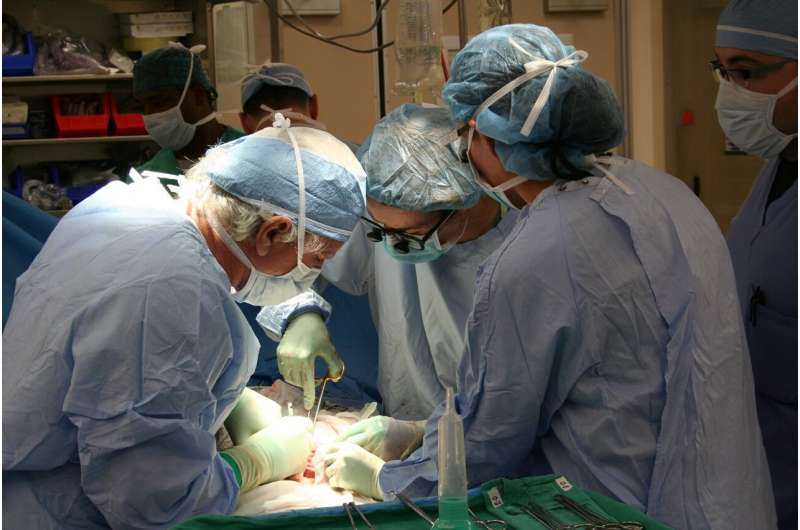Common virus may cause serious disease in transplant patients

A common virus that causes no harm in most people may be a danger to organ transplant recipients and other immunocompromised people, say researchers at Columbia University Irving Medical Center.
The researchers found that a human polyomavirus (HPyV9) was associated with the deaths of three solid organ transplant recipients who developed a severe skin rash and then died about a year later from pulmonary and multiorgan failure.
The study, published Feb. 9, 2022, in JAMA Dermatology, was led by Stephanie Gallitano, MD, assistant professor of dermatology at Columbia University Vagelos College of Physicians and Surgeons, and Nischay Mishra, Ph.D., assistant professor of epidemiology at Columbia's Mailman School of Public Health and Center for Infection and Immunity.
Alhough HPyV9 has been found in the blood of transplant recipients—and may be present in up to 30% of the general population—it has not been previously linked to a human disease.
The deaths of the organ transplant recipients were initially a mystery. Some viruses can cause life-threatening diseases in transplant recipients and other immunocompromised people, but none of these were found in the three patients.
To identify a culprit, the researchers turned to VirCapSeq-VERT, a technique developed by researchers in the Center for Infection and Immunity, that detects all known vertebrate viruses. Using these techniques, the researchers detected HPyV9 and found the virus was present in the skin, blood, and lungs of the three patients.
Additional tests showed the virus was not just present in the patients but was actively replicating, causing the initial skin rash and damaging the lungs.
Because of the newly identified risk, the researchers say organ transplant recipients and other immunocompromised patients should be routinely tested for HPyV9 infection.
VirCapSeq-VERT recently received approval for clinical use from New York State Department of Health.
"Since HPyV9 is not routinely tested in clinical settings, we may find it is more common than we realize," says Mishra. "And as we begin to use VirCapSeq-VERT in clinical microbiology, we can anticipate finding other pathogenic viruses that we cannot otherwise predict."
Earlier detection with the new technique may improve clinical outcomes. A fourth patient with HPyV9 identified by the researchers is currently being screened for viral load to monitor disease progression and is receiving treatment.
"Our study is the first to describe immunosuppressed transplant recipients infected with HPyV9, so the risk of developing HPyV9 infection is still unknown," Gallitano says. "As we learn more about the pathogenesis of this disease, targeted novel forms of antiviral therapy and/or modification of immunosuppressive drug regimens may improve patient outcomes."
The study is titled "Human polyomavirus 9: an emerging cutaneous and pulmonary pathogen in solid organ transplant recipients."
More information: Nischay Mishra et al, Human Polyomavirus 9—An Emerging Cutaneous and Pulmonary Pathogen in Solid Organ Transplant Recipients, JAMA Dermatology (2022). DOI: 10.1001/jamadermatol.2021.5853















